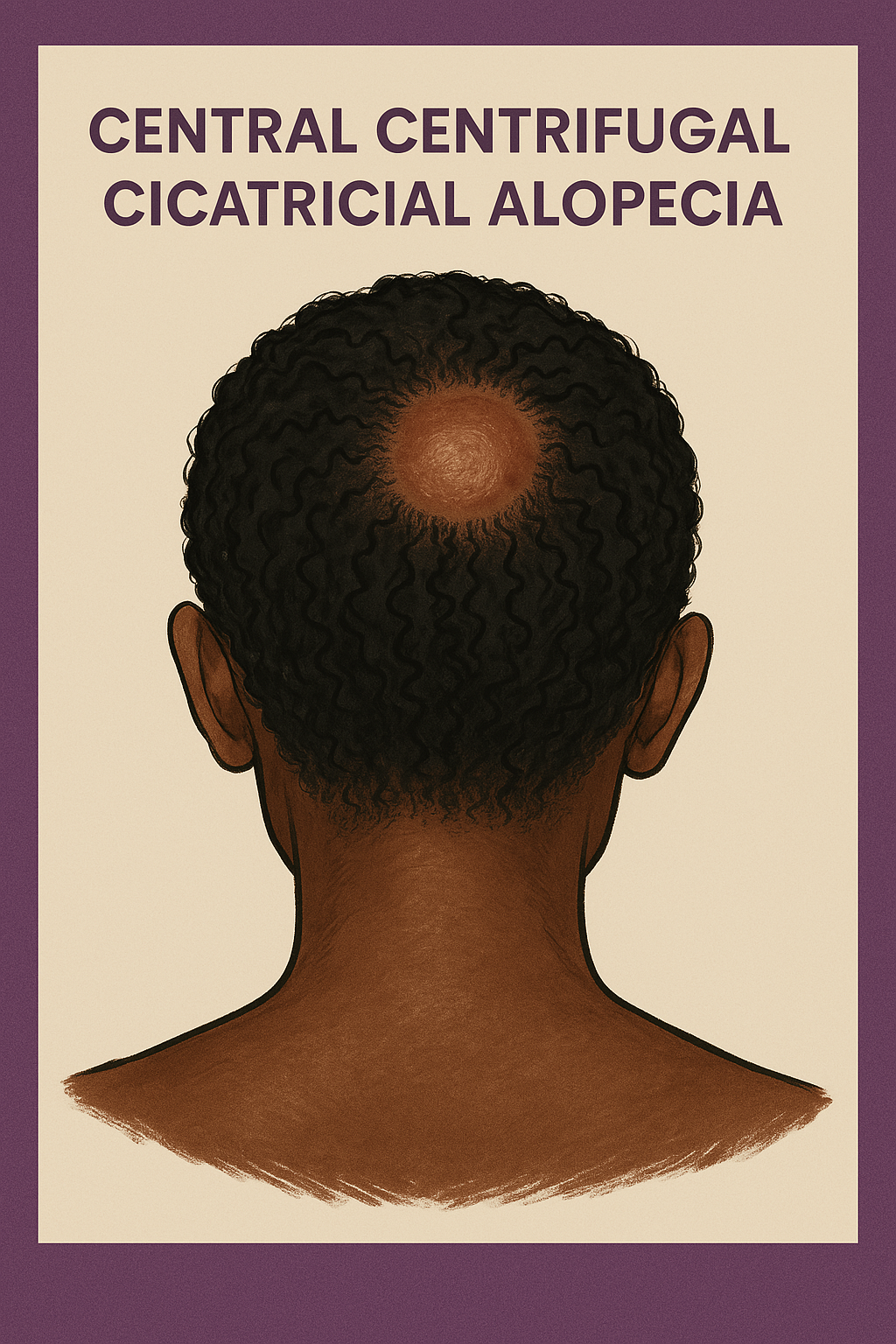Welcome to the ‘Crown Chronicles’! Today, let’s have a heart-to-heart about something that might be affecting your majestic mane: Central Centrifugal Cicatricial Alopecia (CCCA). It’s a mouthful, I know, but stick with me—I’m here to break it down in a way that’s as easy as your Sunday wash day.
My Personal Journey with CCCA
I remember the first time I noticed a change in my hair. My once-thriving crown seemed to be thinning right at the center. At first, I brushed it off—maybe it was just stress or a bad hair month. But as time passed, the thinning became more pronounced, and my scalp started sending out distress signals: itching, tenderness, and even a burning sensation. It was like my scalp was throwing a tantrum, and I couldn’t ignore it any longer.
Recognizing the Early Signs
If my story resonates with you, it’s essential to recognize the early signs of CCCA:
- Increased Hair Breakage: Especially around the crown area. If you’re seeing more strands in your comb or on your pillow, take note.
- Scalp Discomfort: Persistent itching, burning, or tenderness can be your scalp’s way of waving a red flag.
- Visible Scalp Changes: Before significant hair loss, you might notice scaly patches or small bumps on your scalp.
The Emotional Rollercoaster
Dealing with CCCA isn’t just a physical journey; it’s an emotional one too. Watching your hair change can be disheartening, leading to feelings of frustration or self-consciousness. But remember, you’re not alone in this. Many of us have walked this path and found ways to reclaim our crowns.
Taking Action: Steps Toward Hair Restoration
When I realized what was happening, I knew I had to act. Here’s what helped me:
- Consult a Specialist: Seeking advice from a dermatologist familiar with CCCA Was crucial for a was crucial for a diagnosis and early intervention can make a significant difference.
- Revamp Your Hair Care Routine: I ditched the tight hairstyles and harsh treatments. Instead, I focused on gentle, nurturing practices.
-
Incorporate Targeted Products: This was a pivotal step. I turned to products specifically formulated for scalp health and hair growth.
- Holistic Scalp Cream: This cream became my scalp’s best friend. It soothed the irritation and created an environment conducive to hair growth.
- Scalp Soothing Mist: Whenever my scalp felt inflamed or itchy, this mist provided instant relief. It’s like a spa day for your scalp.
- Hair Growth Conditioner with Peppermint Oil: This conditioner not only moisturized my strands but also invigorated my scalp, thanks to the peppermint oil.
-
Exclusive Offer for Our Readers
Embarking on your hair restoration journey is a personal commitment, and having the right products can make all the difference. To support you, we’re offering an exclusive 10% off on your next purchase. Use the coupon code CROWN10 at checkout on BlackHairandSkincare.com to claim your discount. Your crown deserves this royal treatment!
Join the Conversation
Have you experienced CCCA or know someone who has? Share your stories, tips, or questions in the comments below. Let’s support and uplift each other on this journey to healthier hair and happier scalps!
Note: This blog post is based on personal experiences and is for informational purposes only. It should not replace professional medical advice.


0 comments